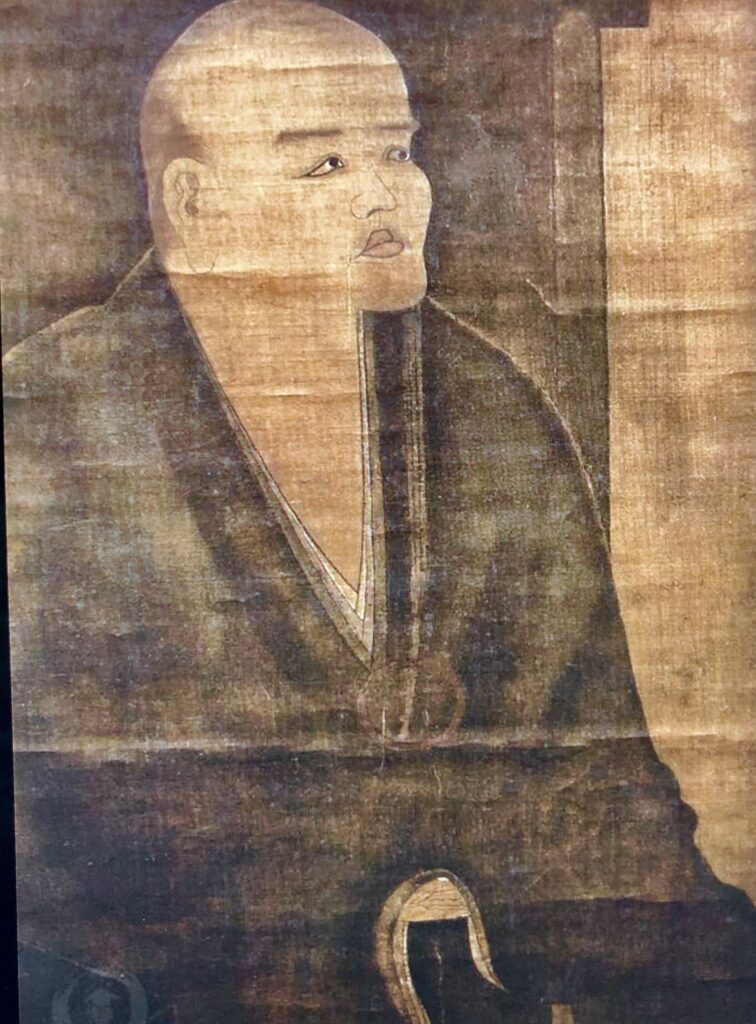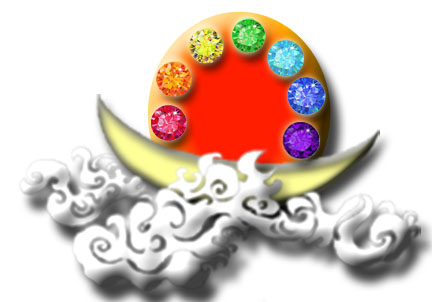
The following is an article I now sometimes include in the Solitary Retreat Manual that everyone receives when they attend such a retreat at the Holy Vajrasana Temple. I am no longer cooking for our retreats, but I do share this on what I have learned about cooking for those on retreat when appropriate. I will offer the caveat that the recipes I have shared on this blog are not all appropriate for retreats, although many are. Maybe some time I will do a full retreat cookbook. I would like to do that and have started such an effort several times.
Three Virtues & Six Tastes–Instructions for Temple Cooks
“If the six tastes are not suitable and if the food lacks the three virtues, the tenzo’s offering to the assembly is not complete.”
These six tastes are: sweet, salty, bitter, sour, spicy, and plain. The three virtues are according to Tanahashi[1]: “Excellent qualities of cooked food: mildness, cleanliness, and formality.” The six tastes and the three virtues are mentioned in the Chanyuan Qinggui (Regulations for the Zen Monastery), and listed in the Mahayana Mahaparinirvana Sutra, which talks about the final days of the Buddha: “These laymen took care of all necessary arrangements to provide meals for the Buddha and the sangha. All used fragrant sandalwood and agarwood for fuel and cooked with water that had each of the eight ideal qualities. The food was delicious, containing the six flavors of bitter, sour, sweet, spicy, salty, and plain. The food also had three other qualities: it was tender, it was pure, and it accorded with the dharma.”
These compose a set of guidelines by which the food is prepared. Without the balance of these components, Dōgen says the meal is incomplete. The Tenzo must take these factors into consideration when preparing the meals for the monastery.
Balance of the six tastes provides variety, but at the same time does not highlight any particular one of the tastes, instead they each have a chance to shine. The “plain” taste is particularly interesting in this case because it constitutes the flavor of the food as it already is before any seasoning is added. When cooking, this “plain” flavor can be easily lost, especially when working with mildly flavored ingredients that the monastery might well be using, such as white rice, tofu, and mushrooms. By not overwhelming the palate with too much seasoning which overpowers this plain flavor, the food of the monastery is a reminder of the Buddhist virtue of nonattachment. This leads into the first of the three virtues, which is mildness.
In Zen monastic kitchens, there are five vegetables that are forbidden from use, known as the five pungent vegetables, which include garlic, onions, chives/scallions, leeks, and asafoetida. These vegetables are said to induce craving, making food more sumptuous and causing one to want to eat more than is necessary. Since Buddhism seeks to cease craving, these vegetables are not used at all in the kitchen. Mildness comprises the taste of the food, the texture, the appearance, and the quantity. Nothing is exorbitant – the food is not meant to be an indulgent experience. It must be easy to eat, for those with poor teeth, and easy to digest. However, it is important to remember that Shakyamuni warned against not only attachment, but also aversion. The Tenzo plays a delicate game of balancing food so that it does not cause attachment to arise in the monks, but also he does not make the food taste bad to discourage attachment, because then aversion and hatred would arise. Mildness strikes the perfect balance, the middle way between asceticism and hedonism.
The second virtue is cleanliness. The Tenzo is careful to wash the rice thoroughly before it is served. The kitchen and all its utensils are kept clean as well. Cleanliness not only prevents disease and contamination from occurring, but it also is another way for the Tenzo to practice mindfulness. He is mindful of his ingredients, his space, and of the consequences these might have on the monks who will later eat the food he prepares.
The third virtue, translated as formality or “in accord with the dharma”, is a little more difficult to parse. Ask “were all the proper procedures followed in the making of this meal? Does this meal inspire wholesome or unwholesome states of being?” That the meal was prepared correctly and with due diligence and respect for the wellbeing of the monks is important.
Dōgen claims, “If you look carefully with your mind undistracted, naturally the three virtues will be fulfilled and the six tastes will be complete.” This is the Tenzo with way-seeking mind (“Dao-Mind”). How does this arise naturally, though? With a mind undistracted, the Tenzo gives more attention and focus to the task at hand, which seems to make it more likely that the meal will turn out well than if he were distracted and careless as he washed and cooked the food. However, why does Dōgen say that the virtues will be naturally fulfilled because of this? It sounds rather that the Tenzo is putting in a lot of energy and focus, and that work is what brings about the fulfillment and completion of the meal, unless he means this exact thing when he says “naturally.” When you give a task your complete attention and cut out distractions, you lose yourself in the work, in a sense. You stop asking “what do I do next?” and instead you just do it. You’re able to maneuver the task skillfully, allowing it to come together. When distracted, you’re constantly pulled away from the task at hand, and each moment is a struggle to stay focused and carry out the work. The work then becomes very unnatural – it is interrupted, clumsy, and unfinished.
Cook Ting’s knife stayed sharp for 19 years even though he had butchered several thousand oxen with it. Explaining how this was the case, he says: “My senses no longer function and my spirit moves freely. Following the natural forms, the knife slides through large crevices and follows the big cavities as they are. Thus I avoid the sinews and the big bones. A good cook changes his knife once a year because he cuts. An ordinary cook changes his once a month because he hacks… Nevertheless, whenever I come to a complicated part and see that it will be difficult, I proceed with care and caution, keeping my eyes steady and moving my hands slowly. Then, with only a slight movement of the knife, the part is readily separated and falls as a clump of earth to the ground. Standing up, I look all around and with an air of satisfaction wipe the knife and put it away” (Zhuangzi, The Mastery of Life). I imagine the Tenzo shares some characteristics with Cook Ting, though the Tenzo would never be butchering an ox (the Zen monastery is completely vegan). Cook Ting has no distractions as he guides the knife, including sensation. He is completely engaged and embodies the task at hand, which is to chop up oxen for food. When he is so engaged, the ox practically butchers itself. The natural crevices (also translated as “Heaven’s Perforations” in the Brook Ziporyn translation, emphasizing that the places Cook Ting cuts are guides which are already naturally present in the ox) require no effort to slice through, but one must proceed carefully and cautiously to make full use of them.
[1] Kazuaki Tanahashi is one of several translators of the Teno Kyokun by Eihei Dogen (1200-1253), one of the first books I encountered when I first visited Kyoto and as a result decided to become a Buddhist. It has been translated as How to Cook Your Life: From the Zen Kitchen to Enlightenment. I am most familiar with Kosho Uchiyama Roshi’s translation as he was the Master of one of my Japanese teachers. It is excellent and I recommend it.





Add comment